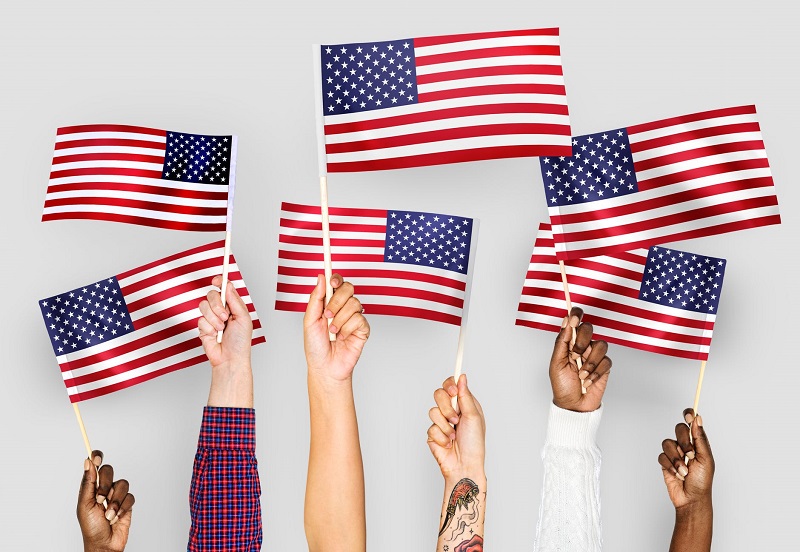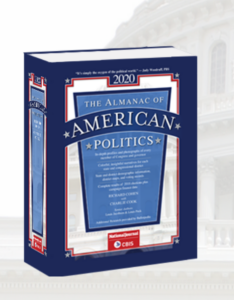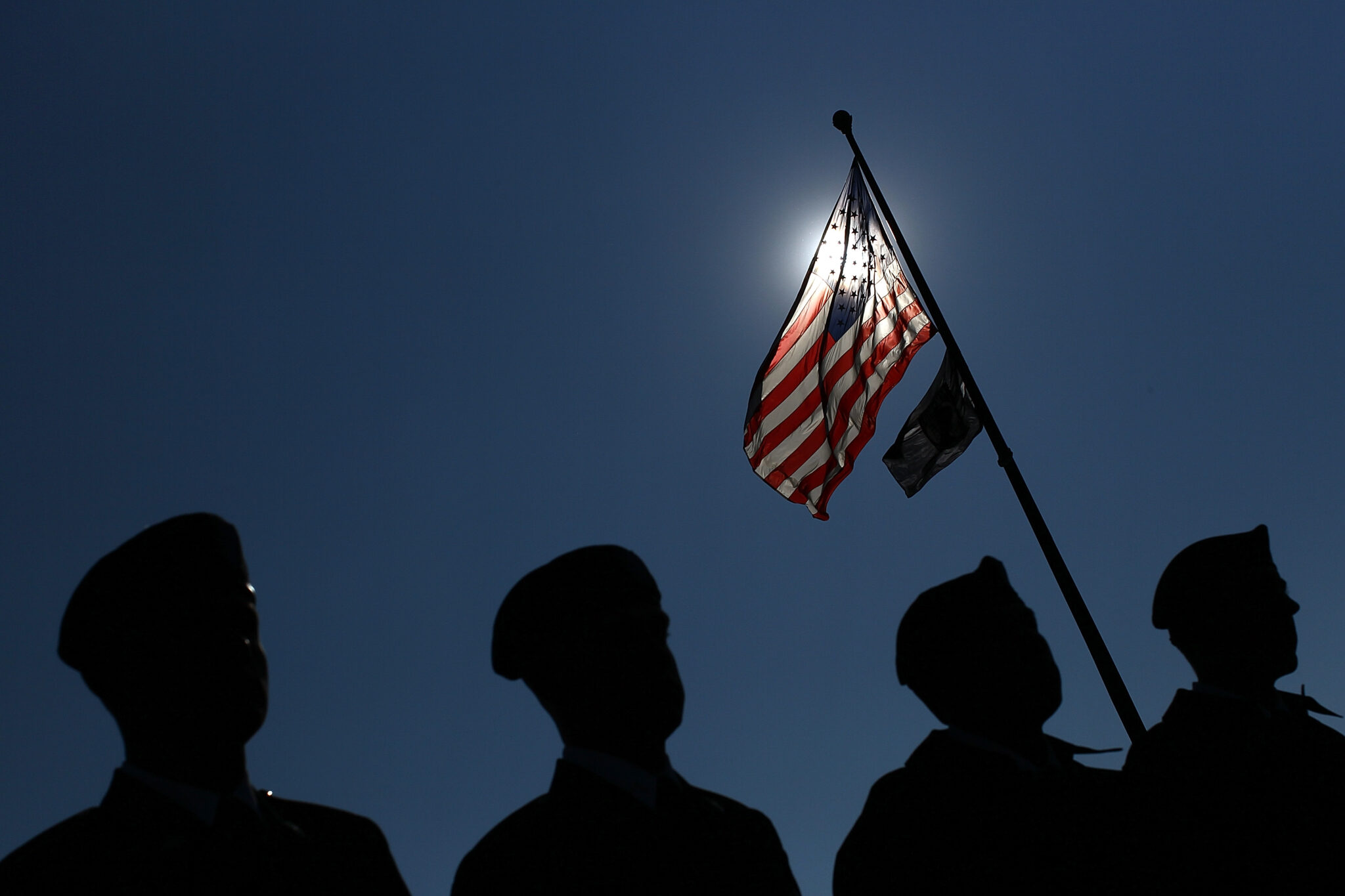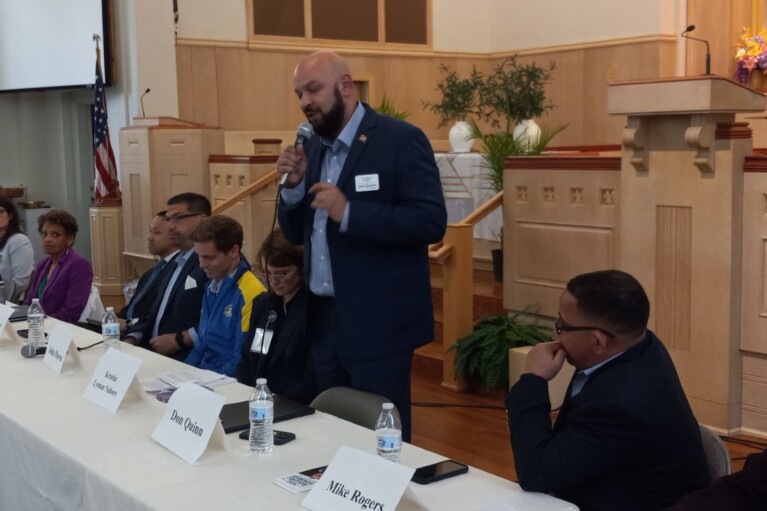From The Almanac of American Politics: Maryland as a Microcosm

Today Maryland Matters offers a preview of the newest edition of the Almanac of American Politics, the classic political reference book for political junkies of every stripe.
How does the almanac view Maryland’s changing politics, demographics and economics? Read the almanac’s profile of Maryland to find out. And please note: on Wednesday, we publish the almanac’s profile of Gov. Lawrence J. Hogan (R).
Maryland, one of the nation’s most Democratic states, serves as a microcosm of the trends shaping today’s Democratic Party: continuing lopsided support in ethnically and racially diverse urban areas, increasing Democratic success among affluent, suburban voters and government employees, and a waning of the party’s influence in rural areas. The 2018 election produced a second term for Republican Gov. Larry Hogan — thanks in part to his aggressive distancing from President Donald Trump — but further down the ballot, Democrats routed his fellow Republicans.
Just south of the Mason-Dixon line and north of the Union-Confederate lines during most of the Civil War (and the scene of its bloodiest one-day battle, Antietam), Maryland is a crossroads state, with both Northern and Southern influences and with both industrial and rural economies. This was the only one of the 13 colonies founded by Roman Catholics — the Calvert family — and its embrace of religious tolerance came less from high-minded ideals than from the Calverts’ desire to protect their property from religious attacks. Similarly, although hot-blooded Baltimoreans wanted to secede from the Union in 1861 (the state song, “Maryland, My Maryland,’’ is based on a poem condemning Abraham Lincoln’s suppression of pro-Confederate rioters), cooler heads prevailed.
 The Puritan impulse was never lively here. Prohibition was enforced only laxly in Baltimore, to the delight of its great journalist-cum-lexicographer H.L. Mencken. Slot machines were legal for years in the rural counties of the Eastern Shore, and, after years of controversy and over the pleas of racetrack owners, were legalized statewide in 2007; voters approved table games in 2012. In some corners of the state, segregation was evident well into the 1960s, and longstanding efforts to remedy segregation within the state’s university system are still the subject of years-long litigation. Much of Maryland’s political history reads like a chronicle of rogues (notably Spiro Agnew, who was Maryland’s governor when Richard Nixon tapped him for his 1968 ticket and then resigned as vice president in October 1973 when he was charged with income tax evasion). Maryland’s genial tolerance may have given it a little too savory a history, but this state cherishes its uniqueness.
The Puritan impulse was never lively here. Prohibition was enforced only laxly in Baltimore, to the delight of its great journalist-cum-lexicographer H.L. Mencken. Slot machines were legal for years in the rural counties of the Eastern Shore, and, after years of controversy and over the pleas of racetrack owners, were legalized statewide in 2007; voters approved table games in 2012. In some corners of the state, segregation was evident well into the 1960s, and longstanding efforts to remedy segregation within the state’s university system are still the subject of years-long litigation. Much of Maryland’s political history reads like a chronicle of rogues (notably Spiro Agnew, who was Maryland’s governor when Richard Nixon tapped him for his 1968 ticket and then resigned as vice president in October 1973 when he was charged with income tax evasion). Maryland’s genial tolerance may have given it a little too savory a history, but this state cherishes its uniqueness.
Chesapeake Bay is the nation’s largest estuary, with water saltier than a river but fresher than the ocean, and with unique shellfish and watermen. Pollution and years of overharvesting drastically reduced its yield, and the terrapin and Chesapeake oyster are rare today. But an ongoing statewide Save-the-Bay movement is having an impact. The estimated number of crabs nearly doubled over two years, according to a January 2017 report from the Chesapeake Bay Foundation, and the oozing of sediment on the Conowingo Dam that feeds the bay has lessened, though the foundation’s 2019 report found some backsliding, amid record rainfall that pushed more pollution into the watershed.
Maryland has reason to be proud of the economy, or economies, it has built over the years. During and after World War II, half the state’s population lived in the city of Baltimore. Then — in a pattern documented in Barry Levinson’s Baltimore movie trilogy of Diner, Tin Men and Avalon — the proportion cratered. Now, just 10 percent of Maryland residents live in the city of Baltimore, falling from 1 million in the early 1950s to 612,000 in 2017. With its large suburban population thick with federal employees and contractors, Maryland leads the United States in median household income, 37 percent above the national average. The Census Bureau defines Washington-Baltimore as a combined statistical area that stretches to Pennsylvania and West Virginia; it’s the nation’s sixth largest, with 6.2 million people. But Baltimore and Washington are not fraternal twins like Dallas and Fort Worth or Minneapolis and St. Paul; they have different histories, economic bases and attitudes.
Washington is a one-industry, white-collar, capital city; the federal government kept it going while the rest of the country endured the Great Recession and a sluggish recovery. Maryland’s unemployment rate peaked at only 7.8 percent in February 2010 and remained around the national average by late 2018. Maryland’s roughly 145,000-strong federal workforce includes many employees at the massive National Institutes of Health complex in Bethesda and the Food and Drug Administration in Rockville; these, in turn, have generated a thriving health-related and biotech corridor in Montgomery County. Baltimore, by contrast, started off as a port and industrial city and managed to stay diversified and largely successful as it spread out into the countryside from its new central core at the Inner Harbor and the solidly built edifices of its downtown streets. It is home to the popular Oriole Park at Camden Yards (the first of the new-old ballparks of the 1990s) and to Johns Hopkins University, with its Georgian buildings along the affluent corridor that runs directly north from downtown all the way to the edge city of Hunt Valley.
In recent years, though, Baltimore has been better known for its more dystopic elements, painstakingly (and prophetically) chronicled by the celebrated HBO dramatic series The Wire. Amid a scourge of drugs and crime, relations between African-American residents and the police soured; between 2011 and 2014, The Baltimore Sun revealed, the city paid the staggering sum of $5.7 million for harms inflicted by police with more than 100 victims winning court judgments. Matters exploded in 2015, when Baltimore resident Freddie Gray, 25, died of spinal injuries after being taken into police custody. Rioting, particularly in the impoverished Sandtown-Winchester neighborhood, ensued. A curfew was imposed, and eventually charges were filed against six police officers. None were convicted. While race was a major factor, the reality was more nuanced; the “mayor, city council president, police chief, top prosecutor, and many other city leaders are black, as is half of Baltimore’s 3,000-person police force,” noted journalist Michael A. Fletcher in the Washington Post. In August 2016, the Department of Justice released a report critical of the city’s aggressive policing strategy against quality-of-life crimes. The so-called “zero tolerance” policy helped torpedo the 2016 presidential candidacy of Martin O’Malley, who had served as mayor when the policing strategy was first carried out, and the crime wave continued in 2018, when Baltimore had more than 300 homicides for the fourth year in a row. It was a far higher per-capita murder rate than other big cities.
 For years, most of Maryland’s successful statewide politicians came from Baltimore, including two mayors who won the governorship, William Donald Schaefer and O’Malley. For three decades, Maryland’s senators lived in Baltimore and commuted to Washington. Baltimore has a long Democratic tradition and most of its voters are registered Democrats. Until 2014, Democrats had yielded the governorship only once since 1966 — from 2002 to 2006, with Republican Bob Ehrlich. O’Malley ousted him in 2006. Democrats outnumber Republicans 7-to-1 in the state’s House delegation, an even more extreme discrepancy than voting patterns would suggest, thanks to a redistricting map so aggressively gerrymandered that it has become subject to a Supreme Court challenge.
For years, most of Maryland’s successful statewide politicians came from Baltimore, including two mayors who won the governorship, William Donald Schaefer and O’Malley. For three decades, Maryland’s senators lived in Baltimore and commuted to Washington. Baltimore has a long Democratic tradition and most of its voters are registered Democrats. Until 2014, Democrats had yielded the governorship only once since 1966 — from 2002 to 2006, with Republican Bob Ehrlich. O’Malley ousted him in 2006. Democrats outnumber Republicans 7-to-1 in the state’s House delegation, an even more extreme discrepancy than voting patterns would suggest, thanks to a redistricting map so aggressively gerrymandered that it has become subject to a Supreme Court challenge.
Maryland’s strong Democratic preferences have enabled its members of Congress to wield influence, though that power is often quietly exercised. Paul Sarbanes retired in 2006 after six years in the House and 30 years in the Senate; he was the chief sponsor and shaper of the 2002 Sarbanes-Oxley Act, the far-reaching crackdown on corporate accounting abuses. Sen. Barbara Mikulski, who retired in 2016, was elected to the House in 1976 and to the Senate in 1986; she was the longest-serving woman ever in Congress and chaired the Appropriations Committee. She was succeeded by Chris Van Hollen, who headed the House Democrats’ campaign committee in 2008 and 2010; despite being a newcomer to the chamber, he was tapped to head the Democratic Senatorial Campaign Committee’s efforts in 2018, a cycle that presented Democrats with a uniquely difficult mix of seats to defend. Maryland’s other senator, Ben Cardin, served 20 years in the House before winning a Senate seat. In the House, Steny Hoyer serves as the No. 2 in the new Democratic majority under San Francisco’s Nancy Pelosi, whose father, Thomas D’Alesandro, was a congressman from, and mayor of, Baltimore; the rivalry between Pelosi and Hoyer began when they were interns in the office of Sen. Daniel Brewster of Maryland.
In national politics, Maryland for many years was a marginal state. It voted Republican for president as recently as 1988. But demographic and geographic shifts have made it solidly Democratic. Maryland’s African-American population is the fifth-highest of any state, at 30 percent; many blacks in Maryland, especially in Prince George’s County, are college-educated and economically upscale. At the same time, the Hispanic and Asian populations have seen statewide growth rates of 33 percent and 22 percent, respectively, since 2010, especially in inner-ring suburbs like Montgomery County, which is now 19 percent Hispanic and 15 percent Asian. The percentage of foreign-born residents in Maryland trailed the national average until around 2005; it now surpasses the nation as a whole, at 15 percent. All told, a state that was 80 percent white in 1970 is now essentially a 50-50 split between white and minority residents, making it the sixth least-white state in the country.
Maryland’s Democratic gains owe much to the Democratic shift in Montgomery and Prince George’s counties, the two collar counties of Washington. In 2016, these counties cast 31 percent of the two-party presidential vote in the state — well above the duo of Baltimore city and county, which had 22 percent. (Another 16 percent was cast in the Baltimore satellite counties of Anne Arundel and Howard, while 31 percent was cast elsewhere in the state.) In the 1980s, Montgomery and Prince George’s weren’t more Democratic than the rest of the state and were sometimes less so. But during a generation in which Republicans have backed smaller government and taken conservative cultural stands, and in which the racial and ethnic diversity of the Washington suburbs has grown, Montgomery and Prince George’s have become overwhelmingly Democratic. In recent years, minority families have moved further south into once-rural and predominantly white Charles County; it is now Democratic, as well.
Such transformations have helped push Maryland to the left. In 2012, Maryland voters approved in-state college tuition for children of illegal immigrants and measures in favor of same-sex marriage. But in 2014, voters fired a warning shot at Democratic complacency, electing a little-known Republican activist, Larry Hogan, as governor over Democratic Lt. Gov. Anthony Brown, who never attracted much affection statewide and who Hogan succeeded in tying to the less popular aspects of O’Malley’s tenure — a series of tax increases. Hogan won amid a strong GOP performance in swingy suburban Baltimore County and weak turnout in traditionally Democratic areas. The GOP also gained seats in the legislature, though the party remained a distinct minority.
The 2016 presidential contest in the state was never in doubt, and the topline results didn’t differ much from 2012: Hillary Clinton defeated Donald Trump, 61%-35%. The election widened the state’s rural-urban chasm, though one signature employer in the heavily Trump Eastern Shore, the crab industry, received unwelcome news when the new administration changed the foreign-worker visa system, effectively blocking access to many longtime Mexican workers. As governor, Hogan worked relatively comfortably with Democratic legislators, working to protect the state’s Affordable Care Act insurance exchange and seeking to ease the hit from the Trump-backed tax bill, which was structured in a way that would limit some deductions for affluent taxpayers in higher-tax states like Maryland. Even more important for his reelection prospects, Hogan regularly took issue with Trump policies and statements. His approach produced strong approval ratings in a state where 42 percent of voters considered themselves moderate in an October 2018 Washington Post-University of Maryland poll.
In their 2018 gubernatorial primary, Democrats took a contrary approach, spurning the establishment candidate, Prince George’s County Executive Rushern Baker, in favor of former NAACP chief Ben Jealous, who was running as a progressive insurgent. Hogan, bolstered by a sizable fundraising edge, won, 55%-44%, a margin four percentage points wider than his race in 2014; he became the first GOP governor in Maryland to win reelection in more than six decades. Hogan made inroads in Montgomery, Prince Georges and Charles counties and poached an estimated one-third of Democrats statewide. In essentially every other 2018 race, however, Democrats surged. They flipped the county executive seats in populous Howard and Anne Arundel counties and won a competitive executive race in Baltimore County. Despite Hogan’s efforts to gain ground for the GOP in the legislature, the Democrats maintained their supermajority in the Senate and actually added to their supermajority in the House.
Meanwhile, Democrat Brian Frosh easily won another term as attorney general, lending voter validation to his aggressive legal attacks on the Trump administration. Frosh’s lawsuits dovetail with those of another Marylander, Baltimore-based Rep. Elijah Cummings, who was tasked with overseeing Trump and his administration as the chair of the House Oversight and Reform Committee. Hogan, too, got into the anti-Trump act, mulling a possible primary challenge to the president.
Copyright @ 2019 The Almanac of American Politics. This feature was provided by and is included in The Almanac of American Politics 2020 edition set to be released August 2019. To learn more about this publication, visit www.almanacofamericanpolitics.com.


